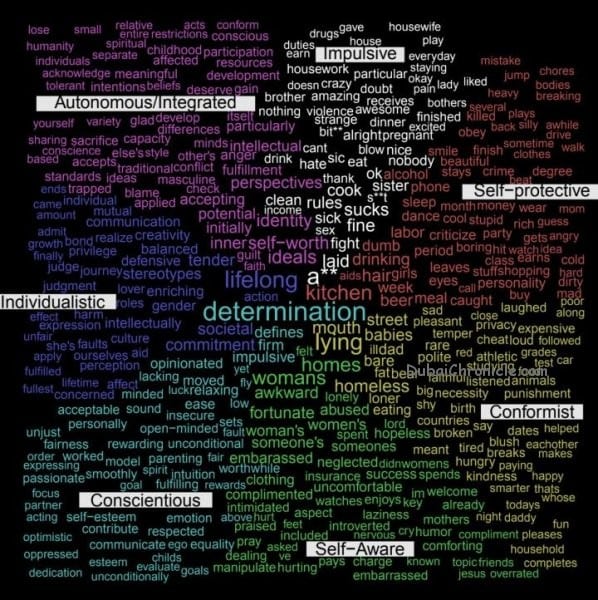
When people think of “personality,” they are likely to think of traits such as warmth or extraversion. For example, a person with high extraversion tends to exhibit an enthusiastic, gregarious, socially dominant, reward-seeking style of social performance across a wide range of situations and contexts as compared to a person with low extraversion.
But personality also develops from self-involvement, through conformity, and toward conscience. These developing aspects of personality are frequently understood as “maturation.”
In a novel study, “Personality Development through Natural Language,” published in the international journal, Nature: Human Behaviour, Kevin Lanning, Ph.D., lead author of the study and a professor of psychology in Florida Atlantic University’s Harriet L. Wilkes Honors College, together with FAU Wilkes Honors College alumna Rachel (Evans) Pauletti, and collaborators Laura A. King, Ph.D., University of Missouri, and Dan P. McAdams, Ph.D., Northwestern University, examined how personality maturation or development was reflected in natural language.
For the study, they examined 44,000 brief samples of text collected over 25 years from the Washington University Sentence Completion Test (WUSCT), a measure of the stages of ego development. They also used the Linguistic Inquiry and Word Count (LIWC), which breaks down texts based on categories that include both syntactical composition and psychological meaning. The LIWC includes about 6,400 terms that are classified into 81 categories ranging from first-person singular pronouns (“I” and “me”) to drives such as power (“superior” and “bully”).
Results from the study find that throughout the course of development, language indicative of self-centeredness (e.g., using the word “I”) decreased, while complexity (words such as “but” and “although”) increased. LIWC categories associated with informality (leisure, assent) and impulse (anger, swear words, sexual, body, ingestion) were generally associated with declining ego level, while the relationship of ego development to verbosity or response length showed the greatest increases at the later stages of development. Taken together, these and other results provide support for the claim that ego development can be understood as a set of qualitatively distinct stages as well as a single dimension.
At the earliest of these stages, language was characterized by a preoccupation with impulse gratification. Subsequently, language was marked by a concern with appearance, then with “fitting in.” The next and most common developmental stage was found to be characterized by self-doubt and the costs and benefits of being in the public eye. Following this, a concern for achievement becomes paramount. At still higher levels of development, abstract considerations such as privilege arise and, ultimately, a still-broader perspective on life goals.
“Building on the empirical analysis of ego level and language will provide us with a deeper understanding of ego development, its relationship with other models of personality and individual differences, and its utility in characterizing people, texts and the cultural contexts that produce them,” said Lanning. “If ego development can be scored from everyday language, then the content of text from Twitter feeds to political speeches, and from children’s stories to strategic plans, may provide new insights into our state of moral, social and cognitive development.”



































